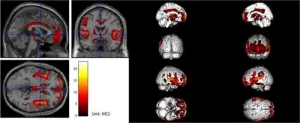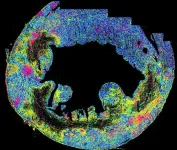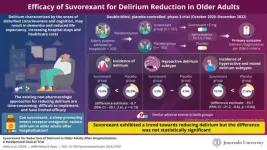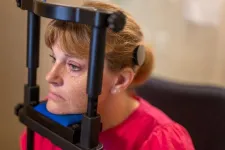A breakthrough in diagnosing hydrocephalus: Multimodality approaches enhance accuracy and reduce costs
2024-08-29
(Press-News.org)
A recent case report published in Cyborg Bionic Systems details the diagnosis of Idiopathic Normal Pressure Hydrocephalus (iNPH) using multimodality diagnostic approaches, highlighting significant advancements in medical diagnostics and patient care. The study conducted by a team of researchers from Tianjin Medical University General Hospital, Tianjin, China, presents a comprehensive case study of a 68-year-old male patient diagnosed with iNPH, showcasing the effectiveness of these advanced diagnostic techniques.
iNPH is a condition characterized by the accumulation of cerebrospinal fluid (CSF) causing ventricular dilation, often mistaken for brain atrophy due to similar symptoms such as cognitive impairment and gait disturbances. The prevalence of this condition increases with age, affecting approximately 1.30% of individuals over 65 and rising to 5.9% among those over 80.
In the documented case, the patient suffered from deteriorated gait, cognitive decline, and urinary incontinence, symptoms that gradually worsened over several years. Initially misdiagnosed, his condition prompted the use of multimodality diagnostic approaches after traditional methods provided inconclusive results. The diagnostic process included brain imaging, cerebrospinal fluid tap tests (CSFTT), continuous intracranial pressure monitoring, and a novel infusion study, which collectively led to an accurate diagnosis and subsequent treatment.
The infusion study, a critical component of the diagnosis, involves the measurement of cerebrospinal fluid resistance (Rcsf), which has been identified as a crucial physical marker for diagnosing hydrocephalus. In this case, an Rcsf level exceeding the normal range significantly indicated the presence of hydrocephalus, confirming the necessity for surgical intervention.
Following the diagnosis, the patient underwent a ventriculoperitoneal shunt surgery, which involves the insertion of a tube to drain excess CSF from the brain to the abdominal cavity. The surgery was successful, with the patient showing remarkable improvement in symptoms and overall quality of life.
This case underscores the vital role of multimodality diagnostic approaches in the medical field. Not only do these techniques enhance diagnostic accuracy, but they also reduce clinical costs and time spent in diagnosis, providing a quicker path to recovery for patients. The effectiveness of these approaches in complex cases like iNPH demonstrates their potential for broader application, promising significant improvements in the diagnosis and treatment of similar conditions.
Moreover, the study advocates for the adoption of these techniques in standard medical practice, suggesting that they could significantly reduce the rates of misdiagnosis and improve clinical outcomes. As medical technology continues to advance, the integration of such multimodal diagnostic tools holds the promise of transforming patient care, offering more precise, efficient, and cost-effective solutions for challenging medical diagnoses.
The paper, "A Male Patient with Hydrocephalus via Multimodality Diagnostic Approaches: A Case Report" was published in the journal Cyborg and Bionic Systems on Jul 1, 2024, at DOI: https://spj.science.org/doi/10.34133/cbsystems.0135
END
[Attachments] See images for this press release:

ELSE PRESS RELEASES FROM THIS DATE:
2024-08-29
Move over, Sonic. There’s a new spin-jumping champion in town – the globular springtail (Dicyrtomina minuta). This diminutive hexapod backflips into the air, spinning to over 60 times its body height in the blink of an eye, and a new study features the first in-depth look at its jumping prowess.
Globular springtails are tiny, usually only a couple millimeters in body length. They don’t fly, bite or sting. But they can jump. In fact, jumping is their go-to (and only) plan for avoiding predators. And they excel at it – to the naked eye it seems as though they vanish entirely when they take off.
“When globular springtails ...
2024-08-29
Highlights:
Salmonella enterica causes disease in 1.2 million people in the U.S. annually.
The most common way people get infected is by consuming contaminated fresh produce.
New research shows that bacterial leaf spot of lettuce and high humidity promote S. enterica growth in lettuce, and climate change is predicted to increase humid periods.
Washington, D.C.—Climate change will increase the risk of the foodborne illness from Salmonella enterica, according to a new study. The research was published today in Applied and Environmental Microbiology, a journal of the American Society for Microbiology.
S. enterica causes disease in 1.2 million people in the ...
2024-08-29
Transformations in the global climate system are profoundly destabilizing ecosystems across the Caribbean, with South Florida and Puerto Rico experiencing notable impacts. To address this challenge, researchers from Florida Atlantic University and the University of Puerto Rico (UPR) in Cayey, are turning to ethnography – an in-depth, immersive research method that involves observing and interviewing people in their natural settings.
FAU’s Dorothy F. Schmidt College of Arts and Letters, in collaboration with UPR Cayey, has received a $650,000 grant from ...
2024-08-29
COLUMBUS, Ohio – Scientists who have described in a new study the step-by-step details of a bacterial defense strategy see the mechanism as a promising platform for development of a new genome-editing method.
The system involves two proteins that team up to disable plasmids, small DNA molecules that exchange genetic information among different bacterial strains. While plasmids provide evolutionary benefits, they can also be seen by host bacteria as threats.
The research team determined that one protein uses a short piece of DNA – known as a DNA guide – to ...
2024-08-29
Crowds flocking to rivers and streams over Labor Day weekend are doing more than cooling off and having fun. They’re temporarily introducing chemicals and microscopic organisms into their local waterways, according to new research from Johns Hopkins University.
The research, published today in ACS ES&T Water, is the first holistic assessment of how recreation impacts streams. Findings also provide insight into the compounds and chemicals people are splashing around in when their favorite swimming spots are packed.
“Residue from ...
2024-08-29
Ischemic heart disease is the most common cause of death in the world. It begins with a “heart attack”, also known as a myocardial infarction (MI), which causes part of the heart to die due to inadequate coronary blood flow. This leads to vigorous inflammation, heart wall remodeling, and heart failure.
Anti-inflammatory drugs have been surprisingly ineffective at preventing heart failure. As a consequence, they are not a routine part of post-MI care. However, it is possible that the most potent molecular and cellular inflammation targets have yet to be discovered.
In the Aug. 28, ...
2024-08-29
Delirium is a sudden onset and temporary state of disturbed consciousness or cognition, occurring due to underlying medical issues like fever or alcohol withdrawal. It is most common among older hospitalized adults aged 75 years or above, leading to increased risk of falls, dementia, low life expectancy, and high healthcare expenses.
Non-pharmacological approaches to prevent or reduce delirium are time-consuming, hard to implement, and partially effective. So, pharmacological interventions offer hope. Insomnia, a significant risk factor for delirium, could be alleviated with sleep-promoting medications. However, not all ...
2024-08-29
For decades, scientists have dreamt of a future where genetic diseases, such as the blood clotting disorder hemophilia, could be a thing of the past. Gene therapy, the idea of fixing faulty genes with healthy ones, has held immense promise. But a major hurdle has been finding a safe and efficient way to deliver those genes.
Now, researchers at the University of Hawaiʻi’s John A. Burns School of Medicine (JABSOM) have made a significant breakthrough in gene editing technology that could revolutionize how we treat genetic diseases. Their new method offers a faster, safer, and more efficient way to deliver healthy ...
2024-08-29
Climate change will move and reduce the land suitable for growing food and timber, putting the production of these two vital resources into direct competition, a new study has found.
The sight of vineyards in Britain is becoming more common as hotter summers create increasingly suitable conditions for growing grapes. But behind this success story is a sobering one: climate change is shifting the regions of the world suitable for growing crops.
Researchers at the University of Cambridge have uncovered a looming issue: as the ...
2024-08-29
University of Iowa researchers have defined how people recognize words.
In a new study with people who use cochlear implants to hear, the researchers identified three main approaches that people with or without hearing impairment use to recognize words, an essential building block for understanding spoken language. Which approach depends on the person, regardless of hearing aptitude or ability: Some wait a bit before identifying a word, while others may tussle between two or more words before deciding which word has been heard.
When a person hears a word, the brain briefly considers hundreds, if not thousands, ...
LAST 30 PRESS RELEASES:
[Press-News.org] A breakthrough in diagnosing hydrocephalus: Multimodality approaches enhance accuracy and reduce costs







